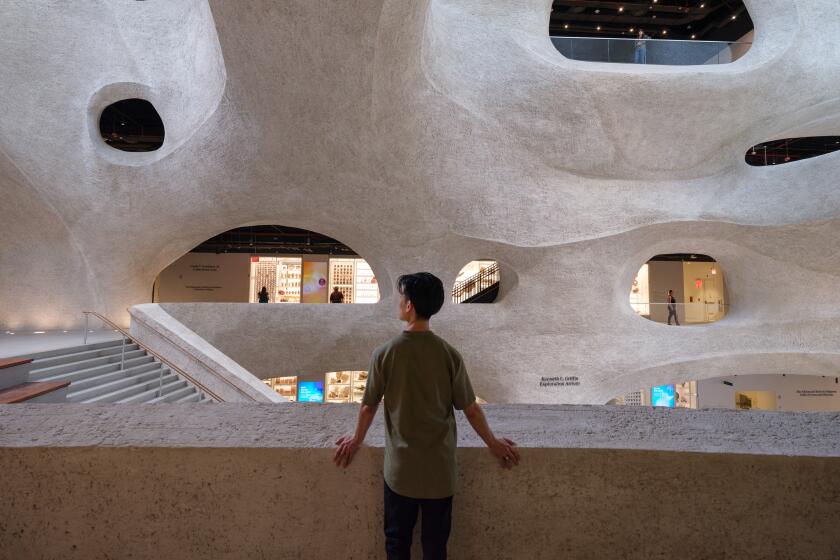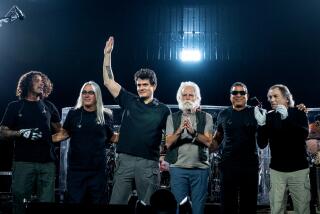
Las Vegas — We were somewhere above the Earth, on the edge of the exosphere, when the gummies began to take hold. Or maybe it was the Mai Tais, acquired during an extended happy hour at the Golden Tiki, the sort of joint where the bathrooms have naughty wallpaper and you can pose for photos on a giant plastic clam shell. I remember feeling lightheaded as we plunged through clouds, soared over mountains and then sunk to the depths of the ocean, where I saw huge jellyfish swooping and diving around us. A voice shouted, “Oh, my God! Oh, wow!” The world trembled and shook. Or perhaps that was just my seat.
Director Darren Aronofksy‘s dreamy film “Postcard From Earth” landed at the Sphere in Las Vegas on Friday night, a week after U2 inaugurated the orb-shaped arena with a graphics-saturated concert inspired by their “Achtung Baby” album — and it was an event. About 5,000 people, including Aronofsky, were in attendance for the premiere. In his opening remarks, the filmmaker likened the technological process of making this unusual picture to “building the plane while flying it.”
That’s because “Postcard From Earth” is no ordinary movie. The interiors of the spherical arena are lined with a curving 270-degree screen that is about the size of four football fields and covers much of the walls and the ceiling. To create a film for this surface required a specially fabricated camera prototype dubbed “Big Sky” that could capture images in high enough resolution (18K) to broadcast them at the Sphere’s massive scale: The building reaches a height of 366 feet — between 30 and 35 stories tall depending on how you measure it.
To see a film in the Sphere, therefore, isn’t so much to watch it as it is to simply let it wash over you.
Vegas is known for its Egyptian pyramids, dancing fountains, fake Rome. A spherical building broadcasting eyeballs takes the surreal up a notch.
“Postcard From Earth” steeps you in a very loose 50-minute tale about life rising from the oceans onto the land, the birth of human civilizations and the moment, not so deep in the future, when humanity departs a despoiled Earth to settle other worlds — in the process recalling our home planet’s magnificence.
The curving screens make it feel like a true immersion. You can observe a school of fish before you, then look up and see the sunlight piercing the water, as if you too were inhabiting the depths. The camera travels through shrines, churches and mosques where you marvel not only at the scale but at the details of dome-topping mosaics you’d need binoculars to spy in person. In a scene Aronofsky himself shared on social media, a male elephant hundreds of feet tall wanders right before your nose — the thunderous reverberations of each step delivered to your seat (and your lizard brain) via a haptic system.
Like so many things Vegas, it’s the sort of thing for which it pays to be lightly toasted.
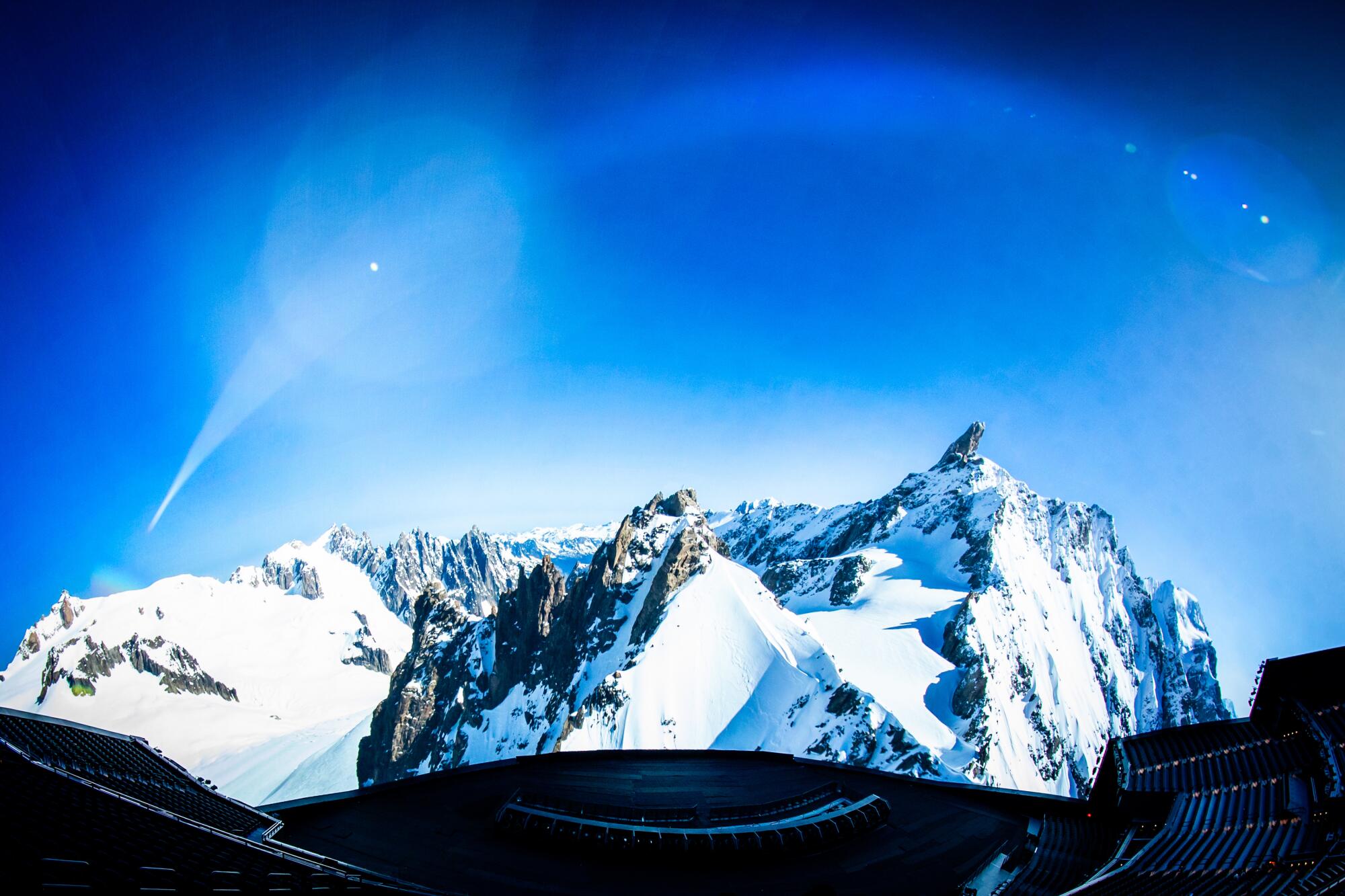
“It comes down to the question of: Should we tell stories that allow audiences to get into the hearts and souls of characters that most of us judge the second we see them?” the director asks in response to criticism of “The Whale.”
As the program got started on Friday evening, an announcer hailed James Dolan, the controversial mogul who conceived the Sphere and runs both Madison Square Garden and the Sphere’s parent company, Sphere Entertainment Co. “One man,” intoned a woman’s voice, “had a vision of the future of entertainment and he drew a circle on a legal pad.”
Like all visions of the future, however, the Sphere is made up of pieces of the past.
There is, for starters, its form and its purpose. The Sphere bears a resemblance to the pavilion that Charles Eames and Eero Saarinen designed for IBM for the New York World’s Fair in 1964. The pavilion consisted of a series of exhibitions — including a puppet-style show about data processing — nested underneath a 90-foot tall ovoid theater known as the Information Machine. Audiences were inserted into the theater via a pneumatic grandstand, after which they were treated to films about man’s relationship to technology on a series of nine geometric screens adhered to the theater’s sloping walls.
The Information Machine, read an ad from the era, “puts you inside the mind of a racing car driver at 120 miles an hour” and explores “the mysteries of a woman’s mind as she plans the seating of a dinner party.” A terrific seven-minute film uploaded to YouTube by Eames Office, the organization that preserves the work of Charles and Ray Eames, shows how the whole elaborate system worked. (Left unexplained: the mysteries of the female mind.)
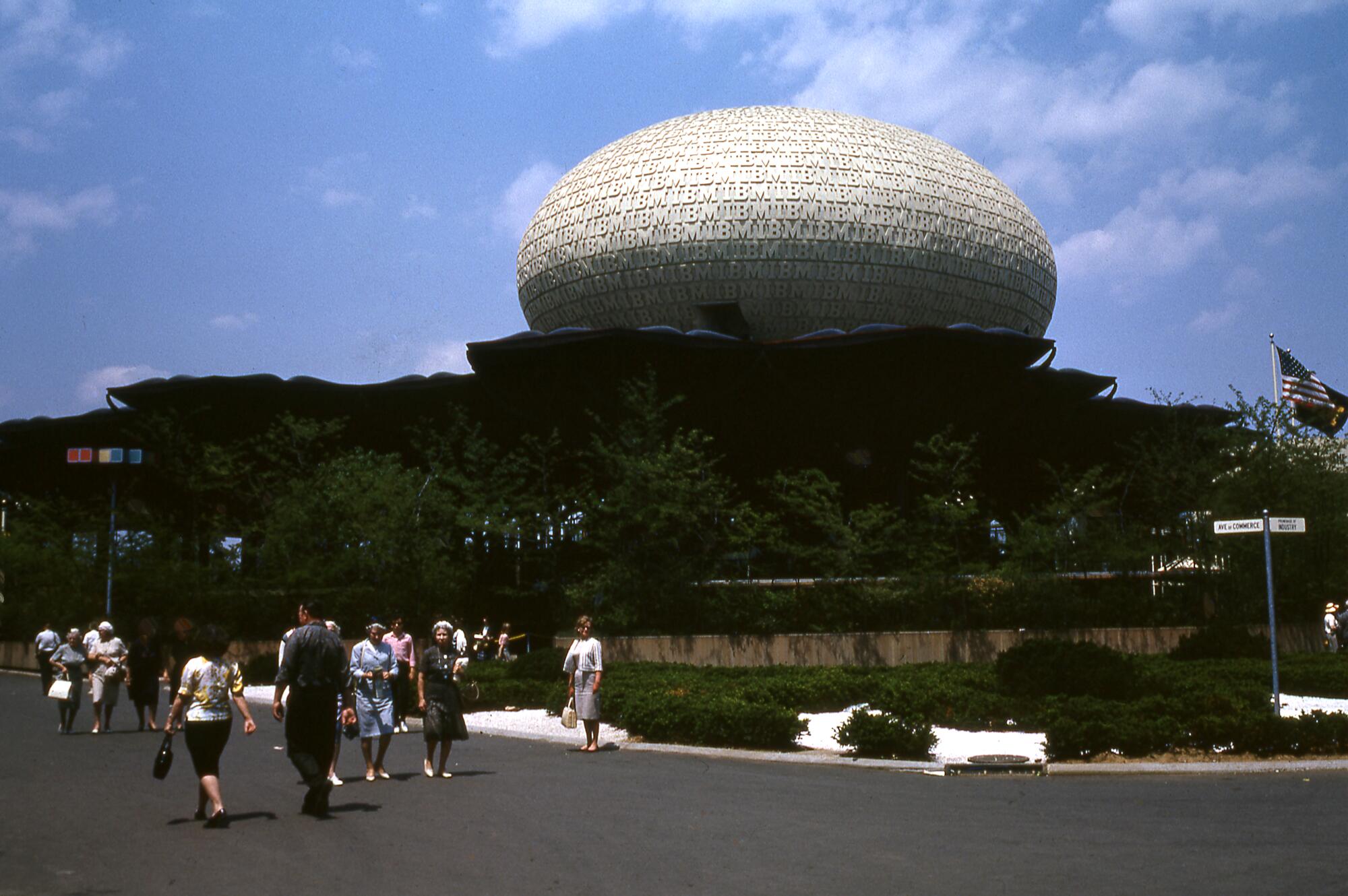
Las Vegas’ Chinatown houses nearly 200 restaurants serving the cuisines of China, Japan, Korea, Vietnam, Thailand, Malaysia and the Philippines.
Designed by Populous, an architectural firm based in Kansas City, Mo. that specializes in large venues, the Sphere incorporates other pieces of popular culture past and present.
Any visit to the Sphere — a.k.a. “the Sphere Experience” — includes time built in to wander about the multi-story atrium, whose highly reflective interiors suggest the sleek sets of late “Star Trek” movies and the blue-light aesthetics of Disney’s “Tron” films. Welcoming visitors to the space are five A.I.-powered robots named Aura, which can say your name, engage in basic conversation or offer explainers on topics such as directional audio and the building’s engineering.
In her physical aspect, Aura — a mechanical robot covered, in part, with human-ish gray skin — evokes the coolly manipulative robot Ava in “Ex Machina” played by Alicia Vikander. But in terms of personality, she comes off more like the very advanced niece of Ford Motor Co.’s Hank the Robot, who puts on humorous routines at auto shows (and is actually manipulated in real time by an actor offstage).
Aura is hardly the only robot in Vegas, a town where automatons will make you a cocktail and serve you cookies and milk. During a tech convention in 2018, a local strip club featured pole-dancing robots named R2DD and TripleCPU. They did not offer lap dances.
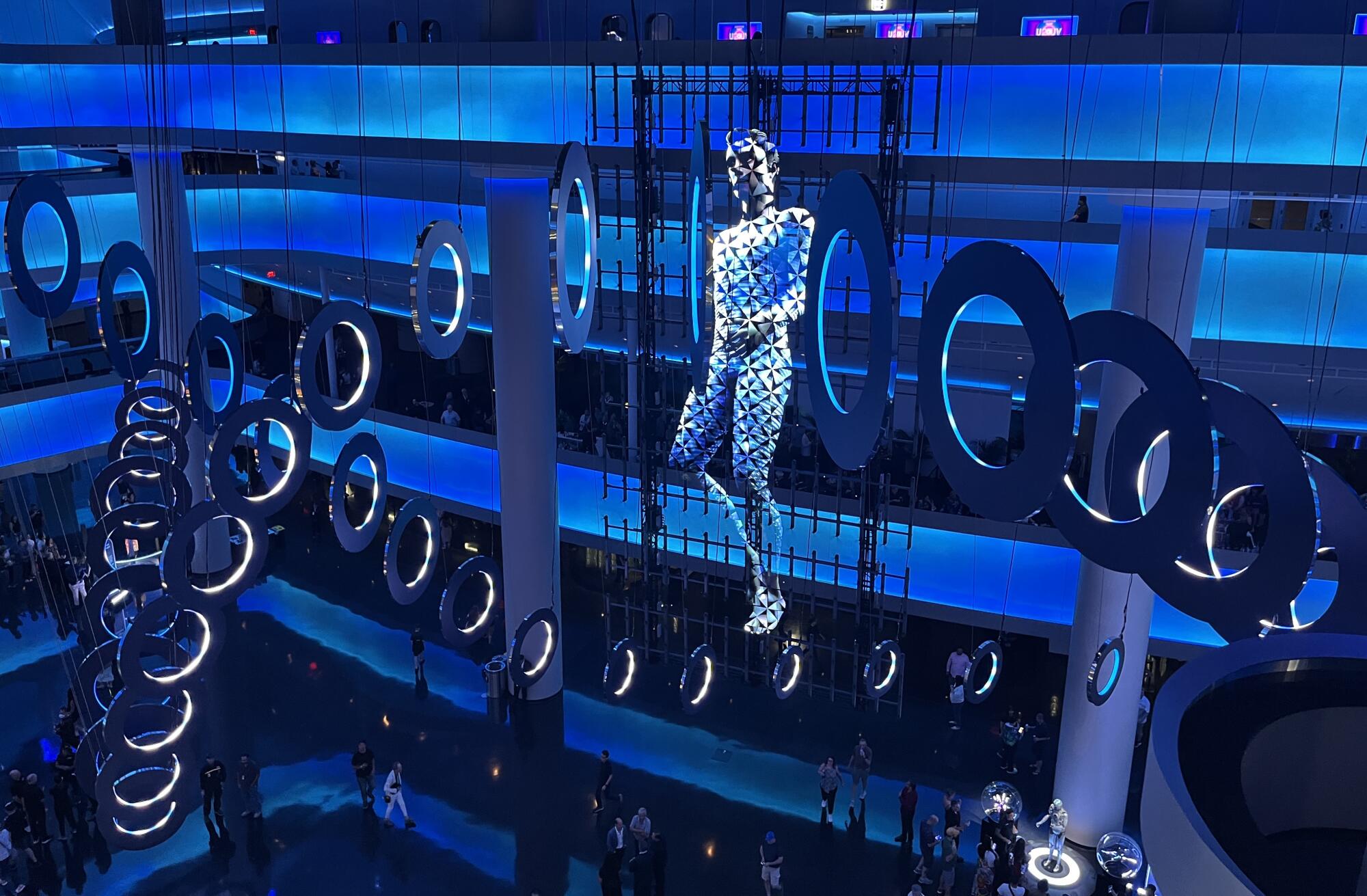
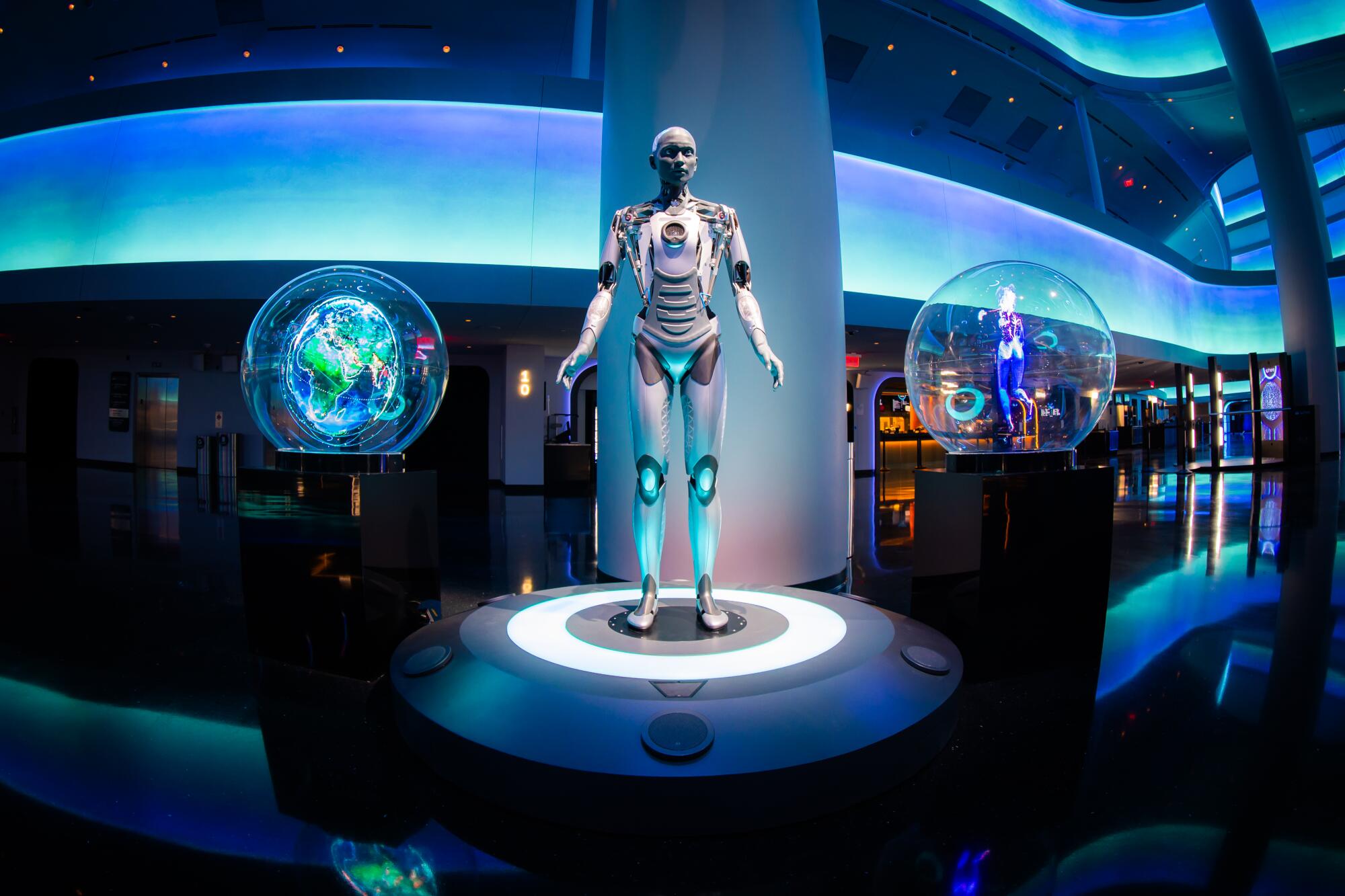
The real shows at the Sphere are not in the atrium but on its surfaces, both inside and out.
The building has developed a cult following for the surreal array of images it has projected on its exterior skin since it was activated in July: eyeballs, emoji and a baby in a space helmet, along with an overwhelming number of ads for the U2 shows. As I pointed out in an earlier story, Sphere is essentially a giant billboard — one that not only draws crowds on the street on a nightly basis but has a massive fan following on social media. Now the inside is drawing crowds too.
The Sphere is not a comfortable venue. In order to jam nearly 18,000 seats into a ball, the designers had to insert the stands at a very steep rake; as a result, the clearance between seats is very narrow. (Pity the fool in a center seat who has to go to the bathroom during a performance.) But it makes up for the snugness with spectacle — namely, the behemoth, curving screen that makes a five-story Imax feel diminutive and transforms the sight of a gecko eating a bug into something akin to a hallucination.
Natural history museums have fraught histories. Studio Gang has designed a building that takes the concept out of the 19th century and brings it back to nature
I have not yet been to a musical performance inside the venue, but seeing Aronofsky’s film made me think of the observations of Las Vegas historian Michael Green. He told me he saw the venue fitting into a tradition of theme park-driven attractions that date back to the late ‘80s. “The Sphere,” he says “is a continuation of the volcano, the fountains, the canals, the pirate show.”
The whole thing certainly feels very Disney.
The architecture is Disney World’s Epcot Center on steroids and the immersive screen finds precedent in Disney attractions such as the Circarama (later the Circle-Vision 360), which over the decades has encircled audiences with majestic films about Italy, Canada and the U.S. And, of course, there is “Soarin’ Over California” at the Disney California Adventure Park, a flight motion simulator that puts viewers in suspended seats before a domed, 80-foot IMAX screen featuring projections of snow-capped peaks, orange groves and the Golden Gate Bridge. “Soarin’ Over California” features so-called 4D effects, such as breezes that blow through the venue during windy sequences — as does the Sphere (in addition to the haptic capabilities in many of the seats).
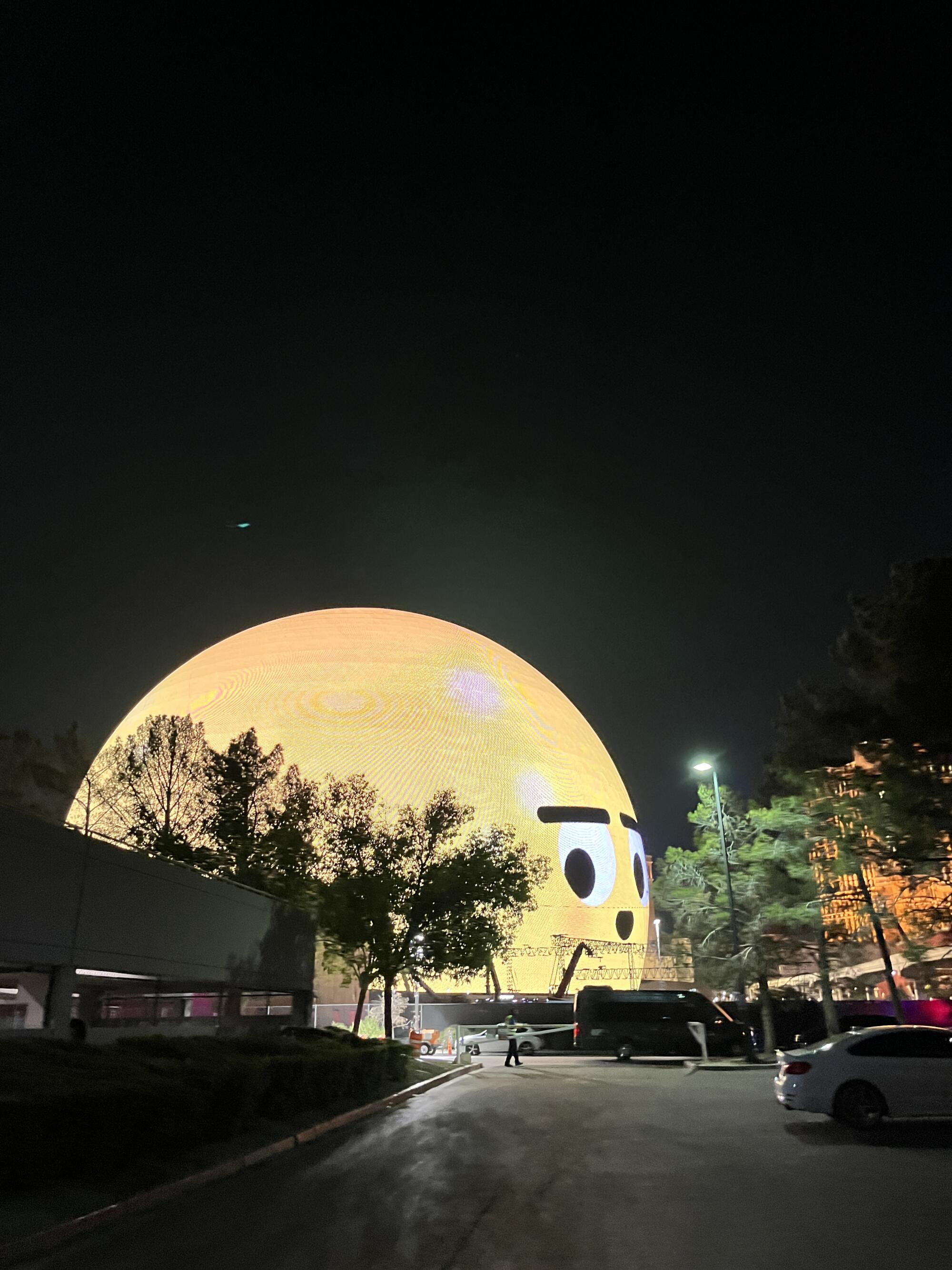
Foster Hirsch’s ‘Hollywood and the Movies of the Fifties’ is as grand as the movie palaces it documents. It’s a lifelong passion project that resonates today
Aronofsky’s film is of the Disney school of immersion. You soar over tea plantations, you plunge into crystalline oceans, you are lifted off into space. Even as the story shifts, and evidence of the damage humans have wrought becomes evident, the shots are nonetheless breathtaking — dour apartment blocks and garbage are rendered cinematic. This latter part is a more accessible, family-friendly version of Godfrey Reggio’s hypnotic 1983 documentary, “Koyaanisqatsi,” with its now-legendary score by Philip Glass. (Props to Aronofsky for tapping the composers of L.A. collective the Echo Society to create a score that brings an industrial richness and atonality to the experience.)
There is no small irony in watching a film about loving the planet while sitting in a venue that is incinerating spectacular amounts of electricity. The villains in “Postcard From Earth” — namely, us — are kept largely abstract. The viewer floats over slums, a strip mine, an artisanal sulfur mine. You see the poor, but not the people who made them that way. There are no bald billionaires in super yachts or reality TV stars in flotillas of private jets. Somewhere in the narrative is a vague lesson about taking care of Mother Earth.
But moments of Aronofsky weirdness nonetheless puncture the veneer. At one moment, the audience inside the Sphere comes face to face with an audience inside a classical music hall, and for a moment we behold each other in silence, as if saying, Here you are, there I am — a humorous mirror effect that takes you, for a split second, outside of your body.
Or maybe it was just the gummies.
Darren Aronofsky's 'Postcard from Earth'
Where: Sphere, 255 Sands Ave., Las Vegas
When: On view indefinitely
Admission: $49 - $169, depending on the date
Info: thespherevegas.com
More to Read
The biggest entertainment stories
Get our big stories about Hollywood, film, television, music, arts, culture and more right in your inbox as soon as they publish.
You may occasionally receive promotional content from the Los Angeles Times.



